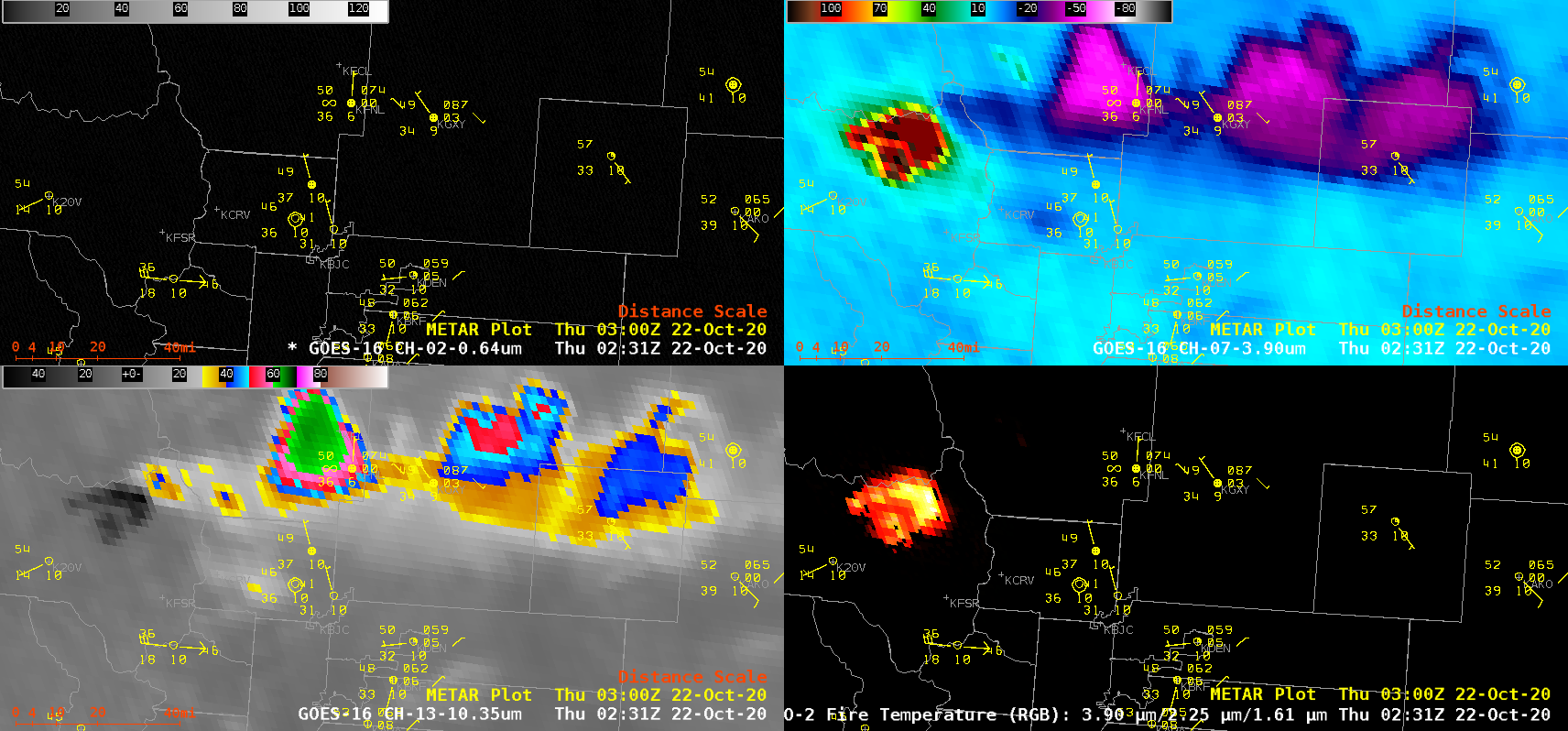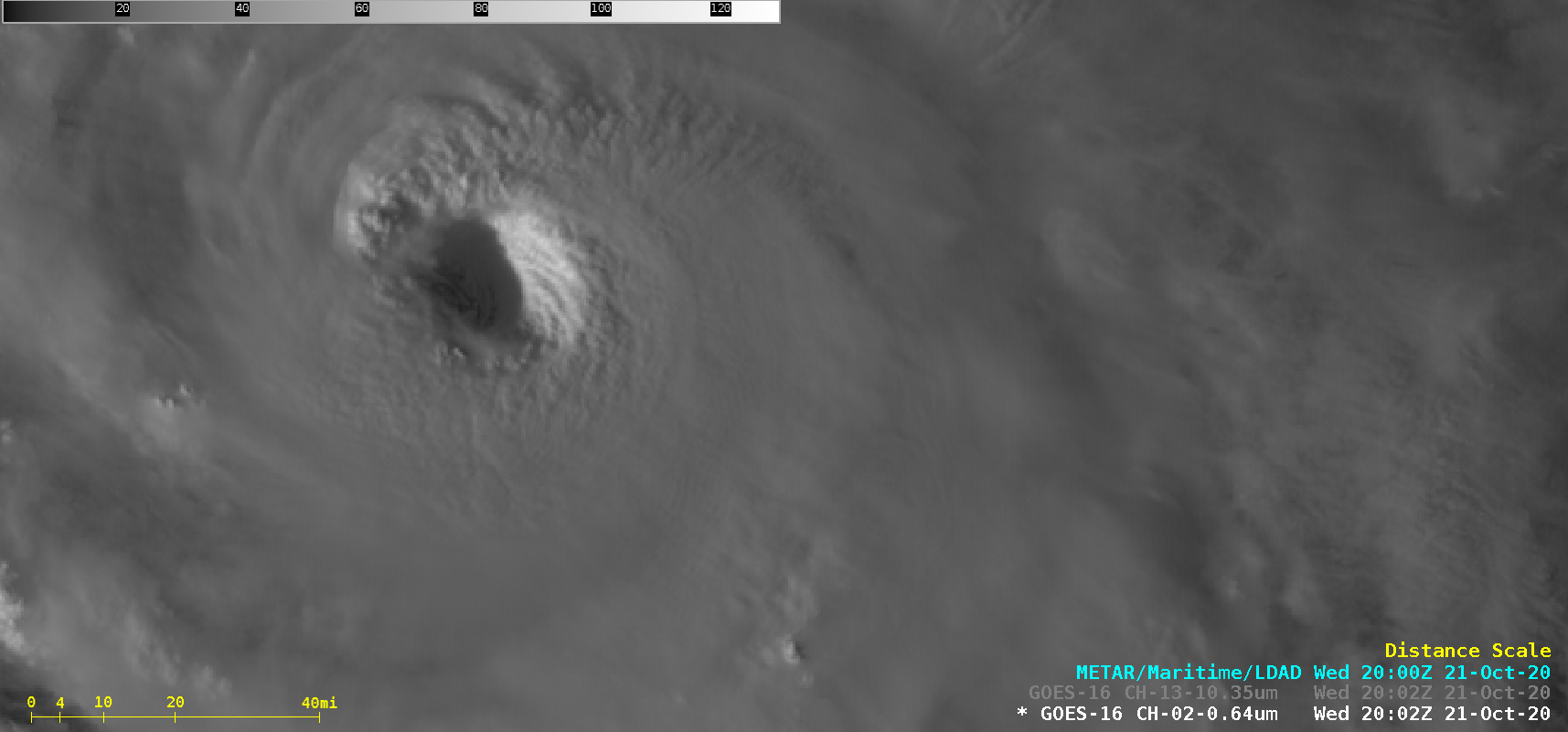Multiple pyrocumulonimbus clouds produced by the East Troublesome Fire in Colorado

1-minute Mesoscale Domain Sector GOES-16 (GOES-East) “Red” Visible (0.64 µm), Shortwave Infrared (3.9 µm), “Clean” Infrared Window (10.35 µm) and Fire Temperature Red-Green-Blue (RGB) images (above) showed a period of extreme behavior of the East Troublesome Fire in Colorado around and just after sunset on 21 October 2020. This rapidly-growing wildfire produced a series of pyrocumulonimbus (pyroCb) clouds — the coldest pyroCb cloud-top 10.35 µm infrared brightness temperatures... Read More





